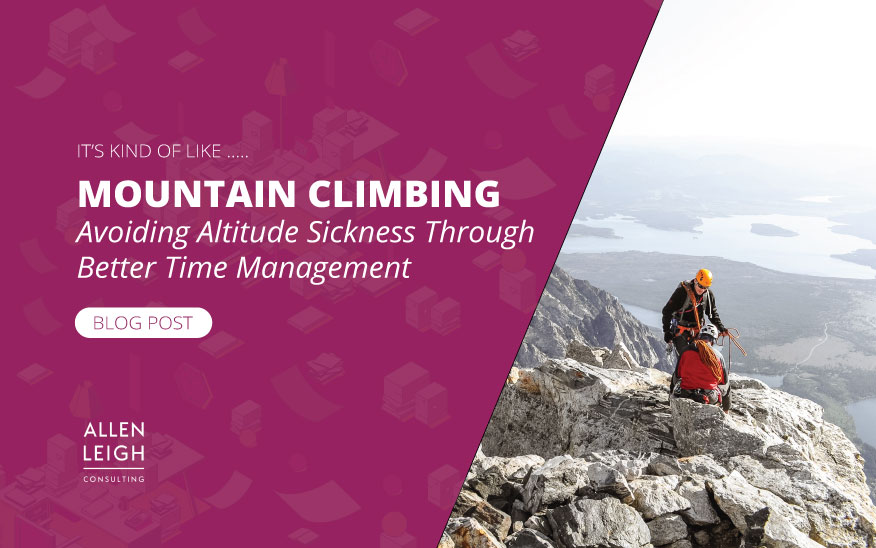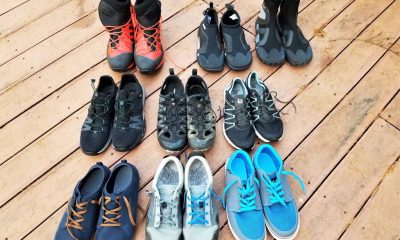Lifestyle
Avoiding Altitude Sickness: Safe Mountain Fun Tips

To prevent altitude sickness, acclimatize gradually and stay hydrated. Prioritize proper acclimatization and hydration to enjoy mountain adventures safely.
Altitude sickness can put a damper on your mountain trip, but with the right strategies, it’s avoidable. As you plan your journey, focus on ascending slowly to give your body time to adjust to the decreased oxygen levels at higher elevations.
Drinking plenty of water is crucial, as dehydration can exacerbate the symptoms of altitude sickness. It’s also wise to incorporate rest days into your itinerary, especially after significant elevation gains. Your goal should be to enjoy the stunning vistas and crisp air without the discomfort of altitude sickness. By taking these preventative steps, you’ll set the stage for a memorable and healthy mountain experience.
Elevation Effects On The Body
Understanding how elevation affects your body is key to a safe mountain adventure. The higher you climb, the more your body needs to adjust.
Physical Changes At High Altitude
Less oxygen is available as you ascend. Your body works harder to get what it needs. Breathing becomes faster to take in more air. Your heart rate increases to pump oxygen-rich blood more efficiently.
At certain heights, your blood may start to change. Your body makes more red blood cells to carry oxygen. This process is your body adapting to keep you going.
Symptoms Of Altitude Sickness
Altitude sickness can strike if you rise too fast. Watch for these signs:
- Headaches that don’t go away with medication
- Nausea or vomiting, making it hard to eat or drink
- Feeling tired or weak, more than usual
- Problems with sleep
- Dizziness or light-headedness
- Shortness of breath with little effort
Each symptom can affect your mountain experience. Listen to your body. Rest and hydrate if you feel any of these symptoms.

Credit: allenleigh.com
Acclimatization Essentials
Acclimatization Essentials are crucial for anyone planning to spend time in high-altitude environments. The body needs time to adjust to the lower oxygen levels found at higher elevations. Understanding and practicing proper acclimatization can mean the difference between a memorable adventure and a challenging ordeal.
Importance Of Gradual Ascent
Gradual ascent is key to preventing altitude sickness. Your body adapts to altitude changes slowly. Rushing this process can lead to discomfort or illness. Aim to climb no more than 300-500 meters (1,000-1,600 feet) per day once above 2,500 meters (8,200 feet). This pace helps your body produce more red blood cells to carry oxygen efficiently.
Optimal Acclimatization Strategies
For the best chance at acclimating effectively, follow these strategies:
- Hydrate well: Drink plenty of water to keep blood oxygenated.
- Avoid alcohol and caffeine: These can dehydrate you and worsen symptoms.
- Eat carbs: A diet rich in carbohydrates can help your body adjust.
- Rest adequately: Sleep helps your body repair and adjust.
Include “rest days” every 600-900 meters (2,000-3,000 feet) of ascent. Use these days for short walks to higher altitudes, then return to lower ones to sleep. This “climb high, sleep low” technique is a proven strategy for successful acclimatization.
| Altitude Range (meters) | Rest Day Frequency |
|---|---|
| 2,500 – 3,500 | Every 2-3 days |
| 3,500 – 4,500 | Every 2 days |
| Above 4,500 | Daily monitoring |
Remember, everyone’s body reacts differently to altitude. Listen to your body and take signs of headache, dizziness, or nausea seriously. If symptoms persist, the safest strategy is to descend to a lower altitude.
Pre-ascent Health Considerations
Pre-Ascent Health Considerations are crucial for a safe mountain adventure. Proper preparation ensures you enjoy the heights without health issues.
Medical Check-up And Vaccinations
Before you plan a mountain trip, a thorough medical check-up is essential. This check ensures your body can handle high altitudes. Discuss with your doctor about any pre-existing conditions that might affect your journey.
- Heart conditions
- Lung issues
- High or low blood pressure
Ensure your vaccinations are up-to-date, especially for travel-related diseases. Common ones include:
| Vaccine | Disease |
|---|---|
| MMR | Measles, Mumps, Rubella |
| DTP | Diphtheria, Tetanus, Pertussis |
| Hepatitis A | Hepatitis A virus |
Fitness Levels And Altitude Tolerance
Assessing your fitness level is key for mountain trips. High altitudes demand more from your body.
Start with simple exercises weeks before your trip:
- Walking or jogging
- Swimming
- Cycling
These activities boost your stamina and heart health. They prepare your body to cope with less oxygen at higher elevations.
Check your body’s reaction to higher elevations by visiting high-altitude locations if possible. This experience gives you an idea of your altitude tolerance.
Diet And Hydration For High Altitude
Mountain adventures call for special attention to your body’s needs. Diet and Hydration for High Altitude play a key role in preventing altitude sickness. Let’s explore how you can fuel your body effectively.
Nutritional Needs Above Sea Level
The air is thinner as you climb higher. Your body works harder, burning more calories. A balanced diet rich in carbs gives you the energy you need.
- Eat plenty of fruits and vegetables. They provide vitamins and antioxidants.
- Include complex carbohydrates like whole grains in your meals. They offer sustained energy.
- Opt for lean proteins such as chicken or fish. They help repair and build muscle tissue.
Snack on nuts and seeds. They offer healthy fats and are easy to carry.
| Meal | Carbs | Proteins | Fats |
|---|---|---|---|
| Breakfast | Oatmeal | Eggs | Avocado |
| Lunch | Quinoa | Grilled chicken | Olive oil dressing |
| Dinner | Brown rice | Salmon | Nuts |
Staying Hydrated At Elevation
At high altitudes, your body loses water through faster breathing and more urination. Drinking plenty of water is crucial to stay safe.
- Drink water regularly, even if you’re not thirsty.
- Aim for clear or pale yellow urine to know you’re well-hydrated.
- Avoid caffeine and alcohol. They can dehydrate you.
Consider electrolyte solutions or tablets. They can help maintain your body’s salt balance.
Remember to drink small amounts frequently rather than large amounts at once. This helps your body absorb the water better.
Recognizing And Responding To Altitude Sickness
Recognizing and responding to altitude sickness is crucial for mountain adventurers. High altitudes can trigger this condition, affecting anyone, regardless of fitness level. Understanding symptoms and taking action can ensure a safe and enjoyable mountain experience.
Identifying Early Warning Signs
Altitude sickness can sneak up quickly. Be vigilant for these symptoms:
- Headache: Often the first clue, resembling a tension headache.
- Dizziness: A feeling of unsteadiness or spinning.
- Nausea: Can lead to vomiting if not addressed.
- Shortness of breath: Occurs even during mild exertion.
- Fatigue: An unusual level of tiredness or weakness.
- Difficulty sleeping: Trouble falling or staying asleep.
Immediate Steps To Alleviate Symptoms
Take these actions as soon as symptoms appear:
- Rest: Stop activity and sit or lie down.
- Hydrate: Drink water to prevent dehydration.
- Descend: Lower altitude can relieve symptoms.
- Eat Carbs: Easy-to-digest foods provide energy.
- Oxygen: Supplemental oxygen can be a quick fix.
- Medication: Ibuprofen or acetaminophen for headaches.
If symptoms persist or worsen, seek medical help immediately. Timely response can prevent serious complications.

Credit: www.nytimes.com
Medication And Preventative Measures-Altitude Sickness
Exploring the majestic mountains can be exhilarating. Yet, the high altitudes bring the risk of altitude sickness. Understanding and taking the right medication and preventative measures is crucial. It ensures a safe and enjoyable mountain experience.
Prophylactic Medications
Prescription drugs like Acetazolamide and Dexamethasone are popular choices. They help prevent and reduce the symptoms of altitude sickness.
- Acetazolamide – It aids breathing and adjusts the body to higher altitudes.
- Dexamethasone – This powerful medication reduces brain swelling and treats severe cases.
Always consult with a healthcare professional before starting any medication.
Natural Remedies And Supplements
Natural remedies and dietary supplements can also help manage altitude sickness.
| Natural Remedy | Benefits |
|---|---|
| Ginger | Alleviates nausea and improves digestion. |
| Ginkgo Biloba | Enhances blood flow and oxygenation. |
| Coca Leaves | Traditionally used to combat altitude effects. |
Hydration and Iron supplements are vital. They support the body’s adjustment to higher elevations.
Equipment For Mountain Safety
Exploring the mountains can be an exhilarating experience. Yet, safety should always come first. Proper equipment is crucial when trekking to high altitudes. It helps avoid altitude sickness and ensures a safe journey. Let’s dive into the essential gear and technology that can aid your mountain adventure.
Essential Gear For High-altitude
Before heading to the mountains, equip yourself with these essentials:
- Insulated jacket: Keeps you warm in cold conditions.
- Quality hiking boots: Provide support and grip on uneven terrain.
- Sun protection: Includes sunscreen, sunglasses, and a hat.
- Hydration system: Water bottles or bladders prevent dehydration.
- Layered clothing: Allows you to adjust to changing temperatures.
Technology Aids For Monitoring Health
Stay safe with these high-tech health monitors:
| Device | Function |
|---|---|
| GPS Tracker | Keeps you on track and locates you in emergencies. |
| Altitude Watch | Monitors altitude levels and warns of rapid ascent. |
| Pulse Oximeter | Checks your oxygen saturation for altitude sickness signs. |
| Heart Rate Monitor | Tracks your heart rate and alerts you to overexertion. |
Remember, these tools are aids, not substitutes for acclimatization and common sense. Always prioritize your well-being over summiting peaks.
Emergency Protocols And Rescue Options
Understanding emergency protocols and rescue options is crucial for mountain safety. This knowledge can save lives in high-altitude environments.
Creating An Emergency Action Plan
Creating a solid emergency action plan is the first step to staying safe. Here’s how to prepare:
- Inform someone about your travel plans and expected return.
- Carry a map and compass, and know how to use them.
- Include emergency contacts and local rescue services in your plan.
- Pack a whistle and mirror for signaling help.
Always have a backup plan. Conditions change quickly in the mountains.
Understanding Mountain Rescue Services
Mountain rescue teams are skilled professionals ready to assist in emergencies. Here’s what you need to know:
| Service | Description | Contact Method |
|---|---|---|
| Helicopter Rescue | Fast, for remote or hard-to-reach areas | Radio, satellite phone |
| Ground Teams | Skilled hikers, climbers | Whistle signals, flares |
Understanding these services can make mountain trips safer.
Always carry a device for emergency communication. It’s essential for quick rescue.

Credit: thenextsummit.org
Frequently Asked Questions
What Is One Way To Avoid Getting Mountain Sickness?
To prevent mountain sickness, gradually acclimate to higher altitudes before engaging in strenuous activities.
What To Eat To Avoid Altitude Sickness?
Eat a diet high in carbohydrates and drink plenty of water to prevent altitude sickness. Avoid alcohol, caffeine, and foods high in salt and protein.
What Is The Fastest Way To Adjust To High Altitude?
To quickly adjust to high altitudes, gradually ascend, stay hydrated, eat a balanced diet, avoid alcohol, and get ample rest.
Conclusion
Embracing the peaks without the pitfalls of altitude sickness is entirely possible. By acclimatizing gradually, staying hydrated, and heeding the tips shared, your mountain adventure can be breathtaking in the best way. Remember, preparation is key to a safe and enjoyable high-altitude experience.
So, gear up, take it slow, and let the majestic heights inspire you, not intimidate.
-
Insurance3 years ago
Here Is How to Get Your Instant Car Insurance Online In The USA
-
Make Money Online1 year ago
Maximizing Your Earnings With Online Survey Feedback: Top Tips
-
Lifestyle1 year ago
10 Best Water Shoes in 2024: Ultimate Aqua Adventures!
-
Beauty3 years ago
My Experience with Anxiety and Depression
-
Insurance3 years ago
Best Pet Insurance Companies & Plans
-
Software as a Service-SaaS12 months ago
10 Essential SaaS Tools for Streamlining Your Business in 2024
-
AppSumo Deals1 year ago
How to Create a Video With Invideo Ai in 5 Minutes: Quick & Easy!
-
gadgets4 years ago
Do You Want? ROBLOX Gift Card Code Generator!!!


















